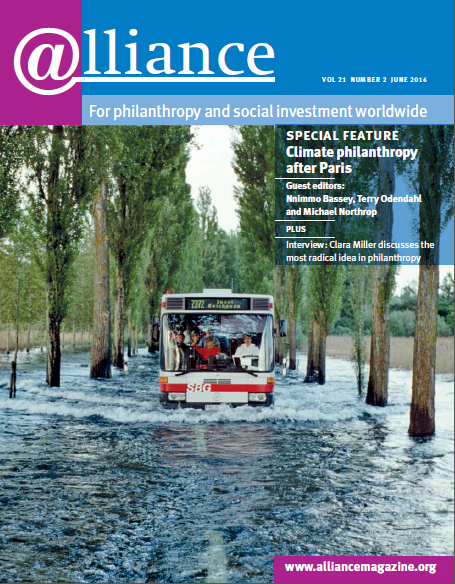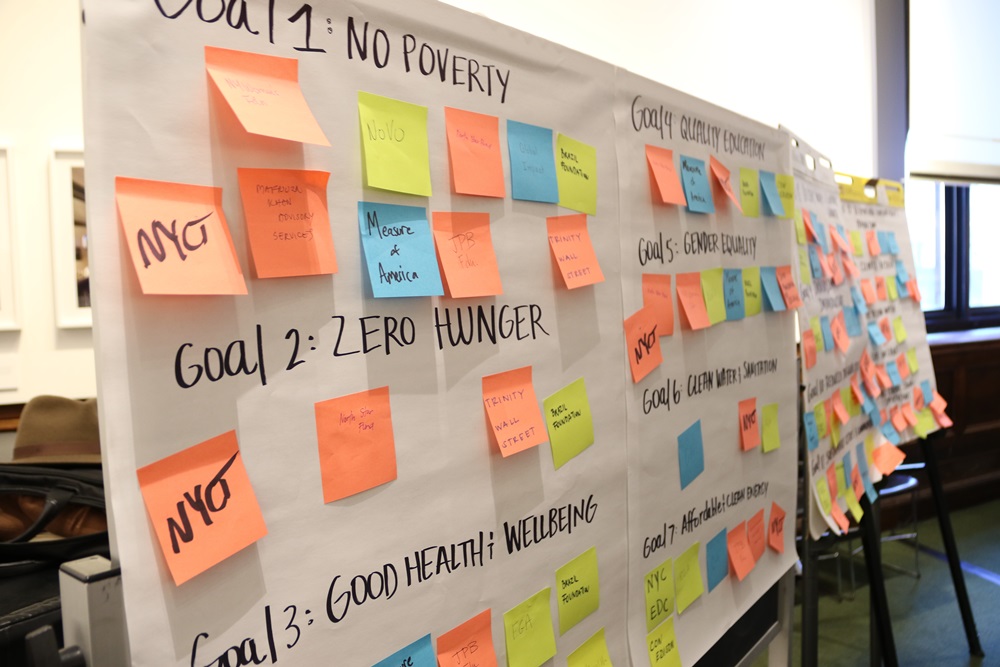The Sustainable Development Goals (SDGs) represent a turning point in development. They apply equally to the global south and north, creating a universal agenda for a different planet by 2030 that ‘leaves no one behind’.
For countries who only worked on the Millennium Development Goals abroad now is a unique opportunity for poverty eradication to be addressed ‘at home’. The US has agreed to apply these goals domestically, an opportunity fully endorsed by President Obama at the UN in September 2015. For this to succeed, US philanthropy must be a part of the conversation.
‘For countries who only worked on the Millennium Development Goals abroad now is a unique opportunity for poverty eradication to be addressed “at home”.’
To begin framing philanthropy’s involvement with the SDGs at home, and complement ongoing work outside the US, the SDG Philanthropy Platform and Council on Foundations convened over 150 foundations in Little Rock, San Francisco and New York. These three cities differ greatly in geography and size and each has unique local challenges. But what they all have in common are local SDG champions: the Clinton Foundation in Little Rock and the commitment to the SDGs by the mayors of New York and San Francisco. These meetings built awareness of the SDGs and also focused on how funders embrace and utilize the goals locally. Here’s what we’ve learned to date:
1) A global agenda is most useful when applied to a local context.
We have immense opportunities to map the SDGs and their accompanying targets and indicators to local reports, indexes and studies. We can use data to identify gaps, influence policy and channel funding to meet local needs.
When applied locally, the SDGs are relevant and powerful. For example, how can philanthropy in Arkansas, with the fourth highest poverty level in America, work together to cut their current 20 per cent poverty rate in half by 2030?
2) Shared goals, targets and deadlines energize new collaboratives.
The SDGs provide an opportunity to think creatively about how philanthropy can convene the private sector, government and non-profits to collaborate in new ways. Philanthropy has significant value beyond grantmaking including through deep experience working on specific issues and the ability to mobilize catalytic capital that can look long-term, fund pilot projects, and complement government funding. The Goals provide a way for funders of different types who maybe aren’t working together already to ‘find’ each other – for example community foundations working on local water issues connecting to international private and corporate funders also working on water issues. US funders are already working together towards Access to Clean Water and Sanitation’(Goal 6) in the context of the Flint water crisis.
3) Trusted local leaders must be at the table and lead conversations.
When seen through a lens of a ‘OneNYC’ plan instead of a UN framework, the SDGs can resonate locally by focusing specifically on what New York needs to achieve by 2030. In Arkansas, our partners have come together to plan for a summit in late 2016 that can lift up exciting work already happening locally, align or integrate similar programmes, and create a common framework around what it will take to move the state forward to achieve goals in healthcare, education and workforce development.
4) We have a new opportunity to learn across borders. The SDGs provide a way for funders to connect their work to others in other geographies – like domestic US funders working in Flint connecting to water funders in Kenya, who are all working on Goal 6 globally. More broadly, the US has 3.5 million children living on less than $2 a day. For the first time, the SDGs provide a framework for foundations working on an issue at home and abroad to organize both strands of work towards a shared target for 2030. Additionally, domestic funders in the US can use the goals as an opportunity to learn from successful programmes addressing the same problems abroad, from Mumbai and Accra to New York and Amsterdam.
We plan to continue convening foundations to consider how the goals might apply in the US, building on work already under way. We’re releasing a new report this summer and connecting with parallel projects exploring how other actors in America can help achieve the SDGs. We look forward to welcoming more global north countries and philanthropies to our coalition.
Lauren Bradford is director, Global Partnerships, at the Foundation Center. Email lbr@foundationcenter.org
Natalie Ross is member relations director for Global Philanthropy at the Council on Foundations. Email natalie.ross@cof.org
For more discussion on the SDG debate, listen to our Alliance Audio podcast.
For more information
SDGfunders.org




Comments (0)